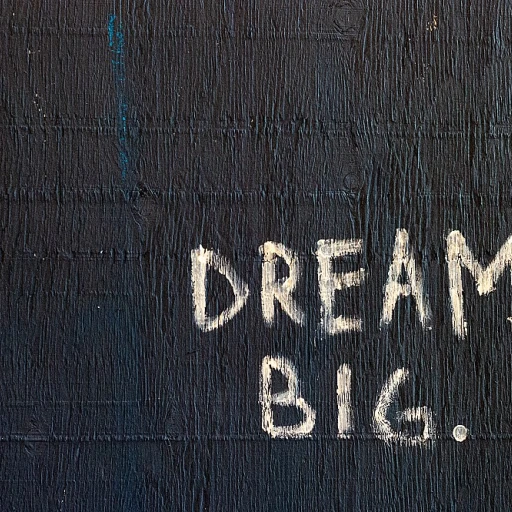
Understanding the Role of a Chief Human Resources Officer
Exploring the Key Role and Responsibilities
The Chief Human Resources Officer (CHRO) is a pivotal figure in any organization, operating at the executive level to guide overall HR strategy and workforce planning. This role transcends traditional HR functions, encompassing a broad spectrum of responsibilities that include architecture job management, career development strategies, and implementing effective talent management systems.Understanding the Core Functions
At the heart of the CHRO's duties are roles and responsibilities that cater to employee well-being and align with company goals. This includes establishing a comprehensive job architecture, which consists of creating clear job families and career paths. These frameworks ensure that employees understand their role within the organization and see clear avenues for career progression. Additionally, the CHRO is tasked with ensuring pay equity across all job levels, playing a crucial role in determining compensation packages that attract and retain top talent. Creating job descriptions that accurately reflect roles is another critical function, aiding both in workforce planning and in the development of a cohesive business culture.Influence on Business Success
A CHRO's impact extends visible fingerprints on business success through effective management strategies. By fostering a culture of development and support, they help an organization harness the full potential of its workforce. Skillfully navigating roles requires a fine balance of strategic foresight and empathy, attending to both organizational needs and employee satisfaction. In a time when talent is a defining asset for companies, the CHRO's role in molding an adaptable and skilled workforce becomes even more significant. Their leadership ensures the alignment of HR strategies with broader business objectives, ensuring competitive positioning in the market. For an in-depth understanding of the journey toward securing a top CHRO position, consider exploring insights and strategies on how to land top CHRO jobs.Building a Strong Foundation: Education and Early Career Steps
Establishing a Strong Educational Background
Embarking on the journey to become a Chief Human Resources Officer (CHRO) necessitates laying a robust educational foundation. Most professionals in this career path have at least a bachelor's degree, commonly in fields like Human Resource Management, Business Administration, or Organizational Psychology. These disciplines provide a comprehensive understanding of the intricacies involved in managing an organization's workforce, equipping future HR leaders with the critical skills necessary for success.
Gaining Early Career Experience
A well-rounded early career experience is pivotal for those aspiring to reach the top of the HR hierarchy. Initial roles within human resources offer exposure to essential HR practices such as employee relations, talent management, and compensation strategies. Engaging in various HR functions helps in building a comprehensive understanding of the business, which is crucial for effective leadership in HR.
Navigating Through Job Families and Architectures
Understanding the concept of job architectures and career frameworks is vital. These structures outline job levels, job families, and career paths that chart the progression within the HR domain. Familiarity with these frameworks aids in strategic workforce planning and aligning HR policies with the organization’s objectives.
Developing a Strategic Mindset
As you build your career, cultivating a strategic mindset becomes indispensable. This involves not just managing employees, but contributing to the organization's success through effective talent management and aligning HR strategies with business development. Strategic thinking helps in honing the ability to analyze and respond to workforce trends, ensuring the company remains competitive.
For those keen on crafting a standout resume that highlights the expertise necessary for a career in HR leadership, consider exploring this guide to crafting a standout resume. The ability to showcase your compensation strategies, leadership in job architecture projects, and experience in promoting pay equity can set you apart in the competitive landscape of HR leadership positions.
Navigating the Corporate Ladder: Key Milestones and Transitions
Charting the Course to Leadership
In pursuit of the Chief Human Resources Officer (CHRO) seat, understanding job architecture and career progression is paramount. Every organization has a unique set of job levels, titles, and a career framework that dictates how roles and responsibilities are structured. Holistic comprehension and mastery of this hierarchy facilitate seamless navigation towards HR leadership roles. Firstly, acknowledge the importance of broadening your scope through diverse HR roles across different business units. This lateral development enhances your capacity for job family understanding, helps in talent management, and prepares you for roles necessitating a deep knowledge of workforce planning.Key Transition Milestones
- Mid-Level Management Roles: Ascending from junior positions to mid-level management can be an unparalleled opportunity to develop a deeper understanding of talent development and pay equity. Key responsibilities include overseeing compensation strategies and fostering employee engagement—critical skills for your upward trajectory.
- Strategic HR Leadership Positions: Here, the challenge is to bridge HR strategy with overall business objectives and architecture project alignment. Roles at this stage heavily involve influencing company-wide decisions, working directly with top management, and participating in high-impact projects across the organization.
- Senior Leadership and CHRO Role Preparation: Achieving senior roles demands demonstrating your ability to lead company-wide initiatives, managing diverse teams, and contributing to architecture projects at a high level. Developing this expertise positions you favorably for the ultimate CHRO role.
Developing Essential Skills for HR Leadership
Building HR Leadership Expertise
In your journey towards becoming a Chief Human Resources Officer, developing essential skills for HR leadership is crucial. It's not just about understanding the job architecture within an organization; it's about mastering the multifaceted roles and responsibilities that come with the territory. To ensure a successful career progression, you should focus on honing the following key skills:- Interpersonal Skills: The ability to connect with employees at all levels is paramount. Building relationships supports successful talent management and facilitates efficient workforce planning.
- Strategic Thinking: As you ascend the career ladder, your role evolves into one that requires an architecture project-like approach to determining how to meet both business needs and employee expectations.
- Business Acumen: Understand and align HR strategies with the company's broader goals. This encompasses a deep knowledge of compensation, pay equity, and how they fit into the larger business architecture.
- Leadership and Management: Whether it's guiding a team through career development initiatives or steering an organization through significant changes, effective leadership is essential.
- Analytical Skills: Proficiency in data analysis enables you to improve job architectures, assess job levels, and ensure the company maintains competitive compensation frameworks.
Overcoming Challenges in the CHRO Career Path
Confronting and Surmounting Challenges
Embarking on a career towards becoming a Chief Human Resources Officer (CHRO) involves maneuvering through a landscape that's as challenging as it is rewarding. At this level of responsibility, individuals are tasked with navigating an architecture that encompasses a myriad of roles and responsibilities, from workforce planning to ensuring pay equity.
One of the main challenges faced in this career path is talent management. The expectations from a CHRO involve adeptly managing a diverse workforce, which includes developing strategies that align employee capabilities with the organization's goals. This requires finely-tuned skills in workforce analytics and employee engagement that determine the architecture job frameworks and ultimately foster a thriving organizational culture.
Furthermore, the complexity of job architecture can pose significant hurdles. A clear understanding of job families, job levels, and job descriptions is essential. Creating a coherent career architecture that facilitates career progression and development for employees while aligning with business objectives is critical for success. This is not only fundamental for the CHRO's role but also plays a central part in maintaining job satisfaction and retention rates across the company.
The need for effective compensation strategies adds another layer of intricacy. Navigating pay equity is crucial; it demands a comprehensive understanding of how compensation impacts employee morale, job satisfaction, and retention. A strategic approach to compensation and benefits further solidifies the CHRO's role as a leader in crafting a sustainable and competitive business environment.
It's also vital to acknowledge the fast-paced evolution of the HR field itself. Staying abreast of new HR technologies and incorporating them into the organization's HR management system is increasingly important. These advancements not only contribute to more efficient processes but also support career development initiatives and help in adapting to changing labor market conditions.
In conclusion, those aspiring for a CHRO role must be prepared to address these challenges proactively. By leveraging a robust foundation of skills, experience, and strategic insight gained throughout their career path, HR leaders can effectively guide their organizations and help shape a successful future for both employees and the business.
The Future of HR Leadership: Trends and Opportunities
Exploring Emerging Trends in HR Leadership
The realm of HR leadership is evolving rapidly, and as a Chief Human Resources Officer, staying ahead of these shifts is pivotal.- Changing Job Architectures: The traditional job architecture is undergoing transformation, requiring HR leaders to craft innovative career paths for employees. This entails creating comprehensive job families and precise job descriptions, ensuring clarity in roles and responsibilities across various levels within an organization.
- Focus on Talent Management: A significant trend is the heightened focus on talent management. With a robust career progression framework, organizations are able to attract and retain top talent, ensuring optimal employee development.
- Pay Equity and Compensation Strategies: As companies strive for transparent compensation structures, pay equity has become a focal point. HR leaders need to devise compensation strategies that align with internal job levels and external market benchmarks.
- Increased Role of Technology: Harnessing HR technology is crucial. By automating routine tasks, CHROs can focus on strategic roles that include workforce planning and fostering employee engagement at all job levels.












